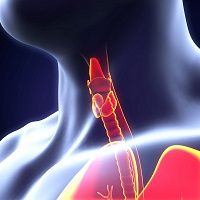Fukushima Radiation Exposure: Monitoring Youths' Thyroids
Four years have passed since the Fukushima Daiichi Nuclear Power Plant accident occurred pursuant to an earthquake.

Four years have passed since the Fukushima Daiichi Nuclear Power Plant accident occurred pursuant to an earthquake. It released quantities of radioactive materials into the atmosphere comparable to those released at Chernobyl in 1986 and created serious health concerns.
Radioactive iodine fallout caused elevated rates of thyroid cancer in Belarus and Ukraine after Chernobyl, but actual radiation exposure was lower in Japan. Regardless, Japanese people were understandably concerned.
The Fukushima Health Management Survey (FHMS) initiated several health protection initiatives after the accident. Among them was a program that conducted thyroid ultrasound examinations (TUE) of all child and adolescent Fukushima inhabitants or visitors at the time of the accident.
FHMS screened 300,476 subjects 18 years or younger between October 2011 and March 2014. Approximately 82% of potential participants took part in the initial TUE screening. The second round survey began in April 2014 and was completed by 30 June 2015. Approximately 170,000 youths participated.
FHMS classified participants as A1 (no nodules or cysts present), A2 (nodule ≤ 5 mm or cyst ≤ 20 mm diameter), B (nodule > 5 mm or cyst > 20 mm diameter), and C (immediate need for further investigation).
In the first round, 51.5%, 47.8%, 0.8%, and 0%, fell into class A1, A2, B, and C respectively; 2294 subjects in categories B and C were referred for confirmatory examination. One hundred and thirteen were subsequently diagnosed with malignancy or suspected malignancy.
Most of the subjects classified as category A2 had cysts, and many people found this rate high and blamed radiation exposure. In response, children aged between three and 18 years old who lived in 3 other prefectures underwent TUE using the same protocol used in Fukushima. Almost 57% of these children were classified as A2, alleviating some fear.
In the second round, 41.6%, 57.6%, 0.8% and 0% fell into class A1, A2, B and C respectively; 1223 subjects in category B were recommended to undergo a confirmatory examination, 25 of these were subsequently diagnosed with malignancy or suspected malignancy.
The thyroid cancers identified were unlikely to be due to radiation exposure, and are more likely to be the result of screening using highly sophisticated ultrasound techniques. The expected latency for radiation-induced thyroid cancer is four or five years, so screening will continue long-term to determine whether this radiation exposure increased risk of childhood and adolescent thyroid cancer or not.
This article appears in the April 2016 issue of Clinical Oncology.